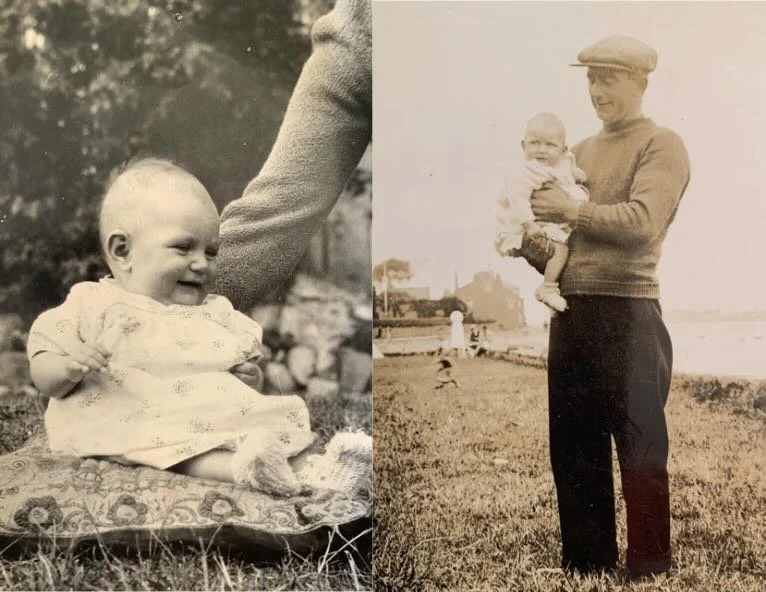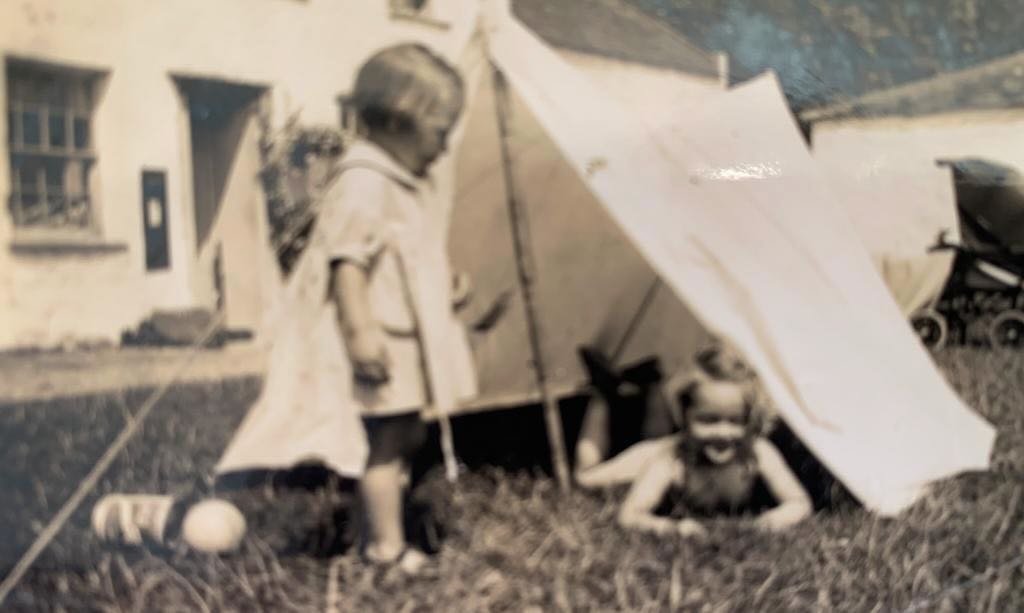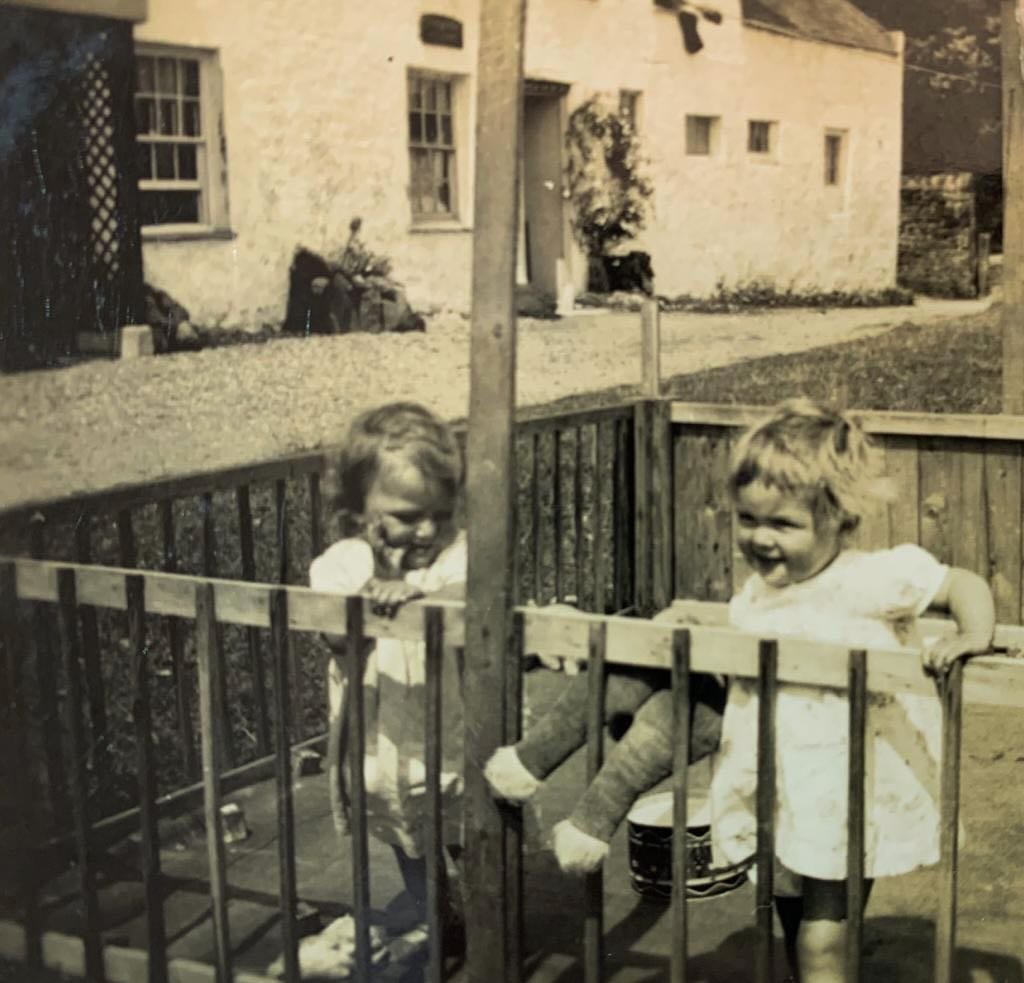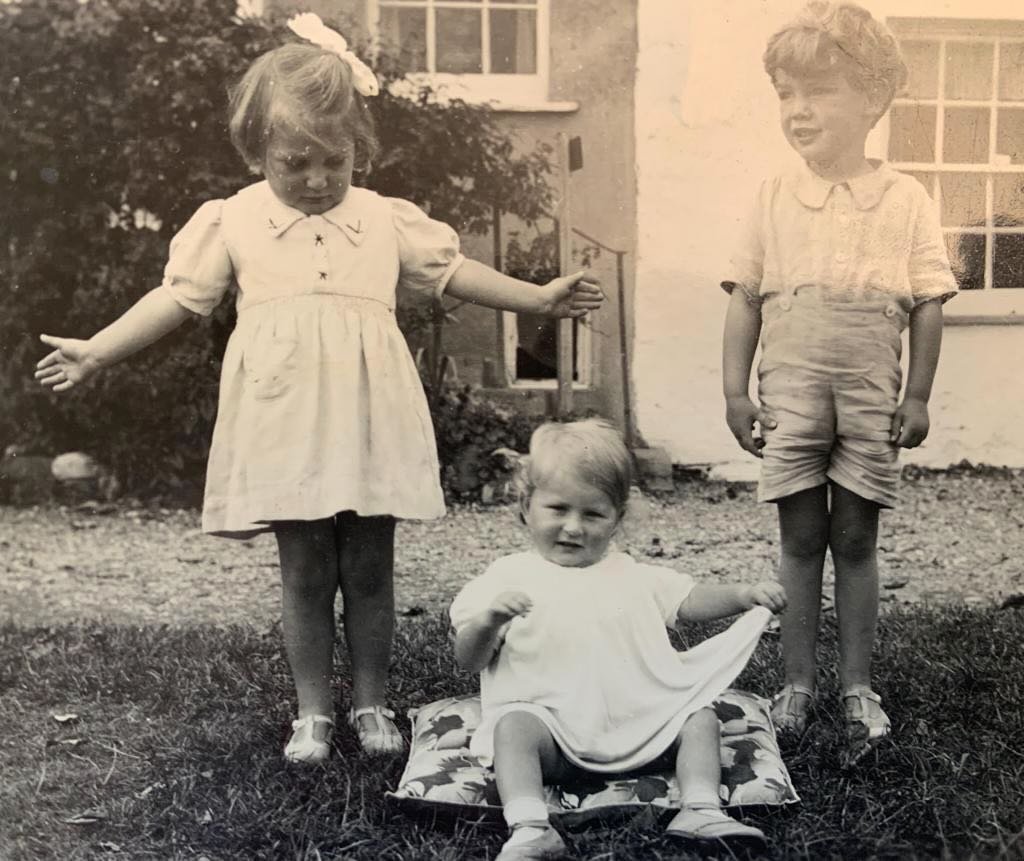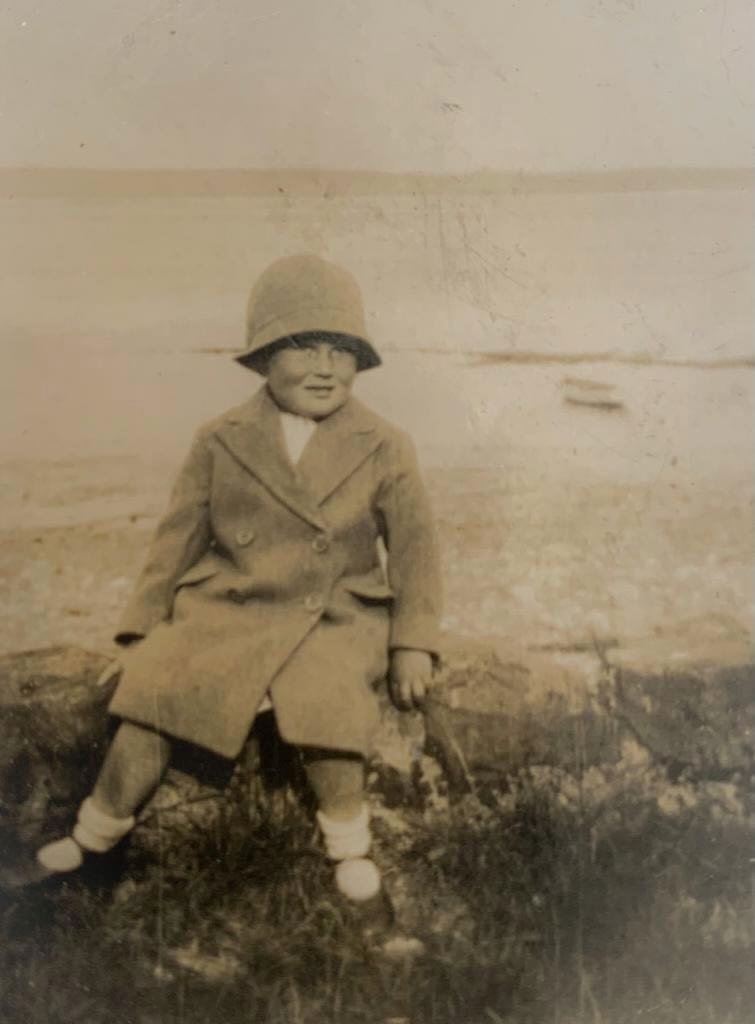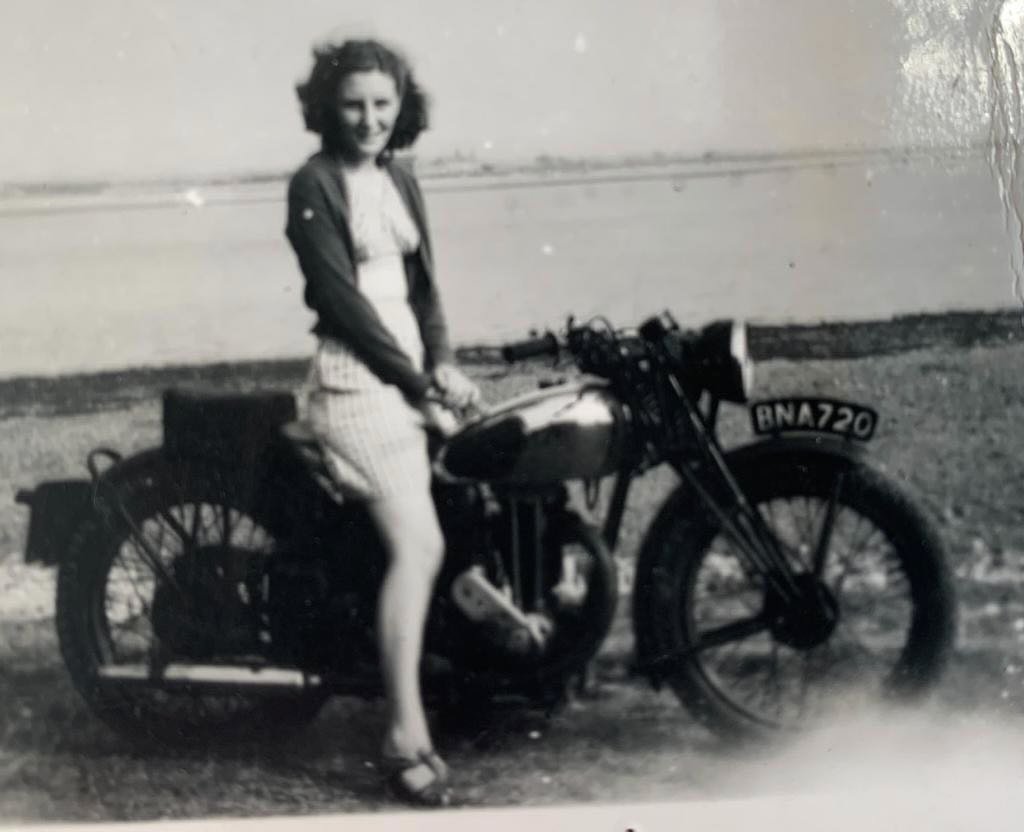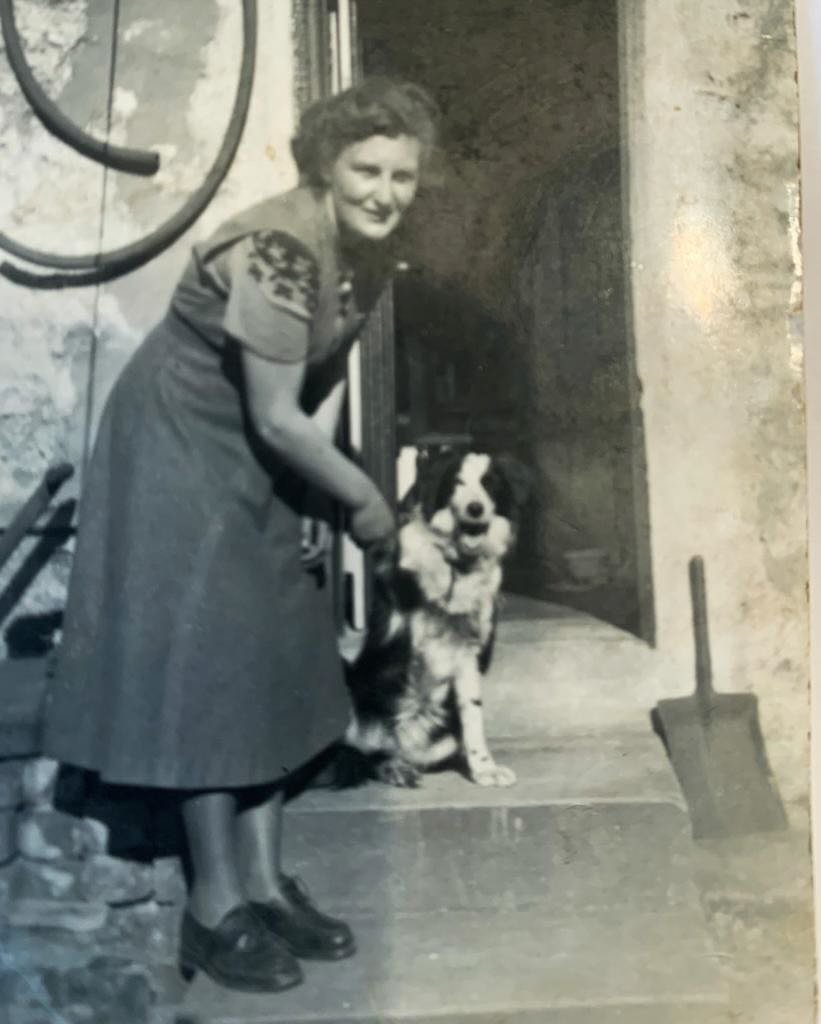Dot
Ninety years ago, with frost clinging to the rooftops of Second Terrace, loud wails shattered the calm of Sunderland Point, heralding a new arrival into the world. With the help of Granny Braid, the Overton midwife, a fit and healthy baby girl was delivered - the latest addition to a Sunderland Point family stretching back to the 1800s.
BEAUTIFUL BABY: The new arrival - Dorothy Townley - is introduced to Second Terrace by her proud father.
It was Saturday, March 18, 1933. The house was No16, the baby was Dorothy Townley – and now, at the tender age of 90 and a half, she is the oldest living person to have been born at the Point.
Dorothy recalls: “None of the houses were numbered in those days - the postie knew where we all lived. But I was born where No16 is now.”
She remembers her many relatives. “I was christened in the Mission Church and grew up surrounded by family - there were Townleys all over the Point - everyone seemed to be an auntie or uncle or cousin. At one point, I think Townleys lived in five different houses at the same time - great aunt Ann at No23, my parents at No16, Aunt Phoebe at No5 where she’d sell sweets and stuff, Aunt Clarice at No 2 the Lane and Hubert at No4 in the Lane where Phil Smith now lives. I was welcome in any house!”
But while childhood was happy, it was hard. “It wasn’t easy,” admits Dorothy. “No piped water! No electricity! I had to walk to the end of Second Terrace to get drinking water near No23 (where John Gilchrist used to live). There was a well there. Every day I would fetch it with my father William Arnold Townley.
“Me and my younger sister Iris would walk to school across the causeway even if it was blowing a gale - dad would tie a piece of rope to our hands when it was blowing so we didn’t fall off the causeway. I didn’t do much schooling as a result!
“We had an iron bath tub by the fire in No16 and on Friday night my dad would heat water on the stove with wood from the shore - I’d have my bath, then my sister and then my mum - I never saw my dad ever take a bath!
HOME SWEET HOME: Dorothy and sister Iris on Second Terrace around 1938
“We had a playpen on the grass on Second Terrace built by my father as it wasn’t safe to let us roam with tides coming in. I used to play with Iris and Tom Smith. I also remember playing each summer with some young relatives of the Gilchrist family who were visiting.
PLAYTIME: Dorothy and sister Iris in the playpen built by their father
THREE AND EASY: Dorothy (left) with sister Iris and Tom Smith in front of Multum in Parvo.
“At Easter, we’d go to Sambos field and have egg rolling competitions down the slope. Mum would boil eggs - and the egg which didn’t crack would win. Then the men would play cricket just by the grave!”
BEAUTY IN A BONNET: Dorothy in her Sunday best on Second Terrace in the thirties.
Dorothy’s family - the Townleys - are steeped in the Point, and in fishing. They feature in so many of the wonderful historical pictures that have been featured on this website - and trace their Sunderland Point lineage back nigh on 200 years.
She recalls: “My father was a fisherman - he had a couple of boats called Walrus and Sirius - and he and his brother Hubert would stand by the nets past the end house (No 20) on Second Terrace and keep their eyes peeled on Glasson, waiting for a fishing boat to come out, they’d always want to beat the Glasson boys to the best spot!
“I was about eight when I started helping. Dad and Hubert would wash their shrimps in the river in a riddle before they were brought ashore to be boiled, either at Harold Gardner’s garage in the Lane, or in a boiler where Phil Smith now lives at No4 the Lane.
“Dad also had fluke traps - a long net and a trap at the end. I remember to this day how I hated picking up the flukes as they flapped away! My father had to sell most of the fish - he’d cut off the heads as people preferred them that way. But mum would keep the heads and boil them and we’d eat the flesh off them because times were hard in the war.
“In the winter, Dad would fish for mussels by the lighthouse, then take them to Glasson to catch the train - they often went as far as Whitby in those days. And all the time my father would be rowing - no engines or outboards in those days.”
Dorothy herself never got the chance to fish - as men only seafaring traditions die hard.
She recalls: “Me and my sister and mum almost never went in the boat - in those days women weren’t encouraged to because it was considered bad luck to have a woman on board. So, Dad would be out shrimping till late at night but we never had any money - I don’t know how mum made ends meet.
“None of the fishermen could swim - and we didn’t swim for fun in those days. We had a little punt which we could row around in. We once saw porpoises near us which terrified us - my dad shouted for us just to sit tight in the boat as he said the porpoises wouldn’t bother us!”
But amid the hardships and inclement weather, there was a tremendous spirit. “New Year’s Eve was a treat when they’d put on the Reading Room concerts - we didn’t have radio or tv - and they would dress in music hall clothes and Victorian dresses and do songs and we’d dance.
“There was food - people would take stuff they’d baked - and it would be past midnight when we went home. Halfway through we’d play whist, then play games.”
There was also fun to be had for naughty children like Dorothy with all the summer visitors renting houses at the Point.
Dorothy says: “I recall a man known as Captain Harry - a funny little feller living at a cottage in Meadow Farm (where David Andrew now lives) which was a ruin of a place at that time - and Captain Harry would get drunk every day in that little cottage.
“I know this because we kids would go into the barn next door where there was a hole in the ceiling, and we could drop down into it.”
ON YER BIKE: Ready to roar along the causeway.
Dorothy fell in love, and in 1953 married Ken Calverley, and they enjoyed many happy years together at the little cottage at No 5 First Terrace before Ken’s sad passing in 2018.
HERE COMES THE BRIDE: Set to leave no16 for her wedding at Overton Church in 1953
She said: “When Ken and I got married, we got presents from everyone at the Point, including Philip Gilchrist, who gave us two paintings, but they weren’t his own - they were of Chinese scenes.
“I remember my dad Arnold moaning about them, saying: ‘What are you going to do with them? Why’s he given you paintings?’ But Ken and I were really grateful - and we went round to thank him personally at Dolphin House. I’d always been a little frightened of him when I was little - with his beard he seemed like Santa Claus.
“Otherwise, I never saw him out and about - and it was his housekeeper Miss Stamper who would answer the door. I’m not sure what happened to those paintings - if they were his own work, they’d be worth something now!”
GOING FOR A SPIN: Dorothy (right) and her husband’s sister-in-law Margaret in the fifties
While Dorothy and Ken and their children Jean and young Ken enjoyed their time at the Point, the cottage at No 5 had a chilling secret.
She says: “I saw a ghost. I really did see a ghost - and my son Ken did too. He saw it first in fact - he’d be about 17 at the time. I was in the bedroom - I remember waking up and seeing this woman dressed in a long dress with a bonnet on her head. She was there for a few minutes - I lay scared stiff in my bed - and then it drifted away.”
“When I told my husband Ken, he didn’t believe it and said, ‘don’t be so daft’ - but young Ken had already seen it. It was my grandmother - and I swear it was real.”
PUPPY LOVE: Dorothy at the back of her cottage at No5, First Terrace with her dog Nellie in the fifties
After Ken died, Dorothy decided to sell the house. She lives in Heysham but her heart will always be at Sunderland Point.
“Ken’s ashes were scattered, some at the Point end, and some at the Grave - which is where I want mine to be scattered. A few of the family’s ashes have been scattered there - and I’ll join them.”
Her memories of life as a young girl on this unique little peninsular on the south side of Morecambe Bay tell of a more innocent and simpler world when Sunderland Point seemed like Shangri-La, steeped in the past and far from the madding crowd.
She added: “Aye, it was wonderful growing up at the Point - better than anywhere in the world. “I couldn’t have had a better childhood or a better mum and dad - or a better place to live.”
Special thanks to Dorothy for agreeing to be interviewed for the article. All the photos are from her collection.
